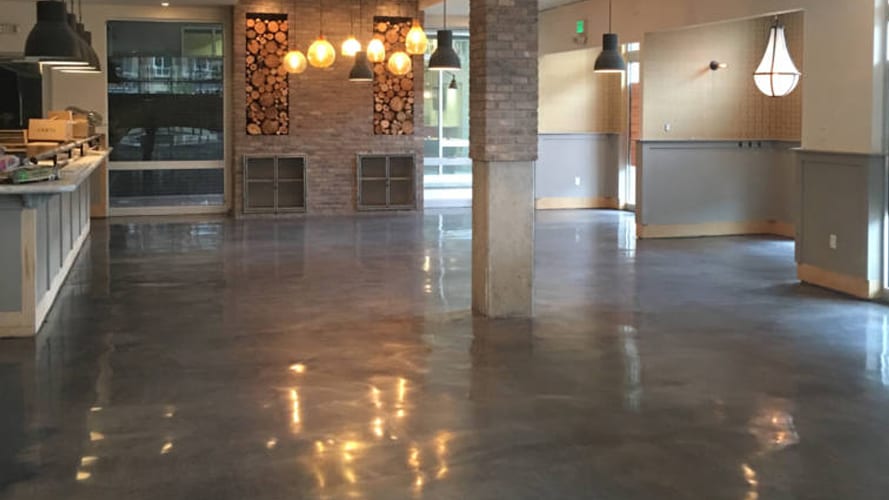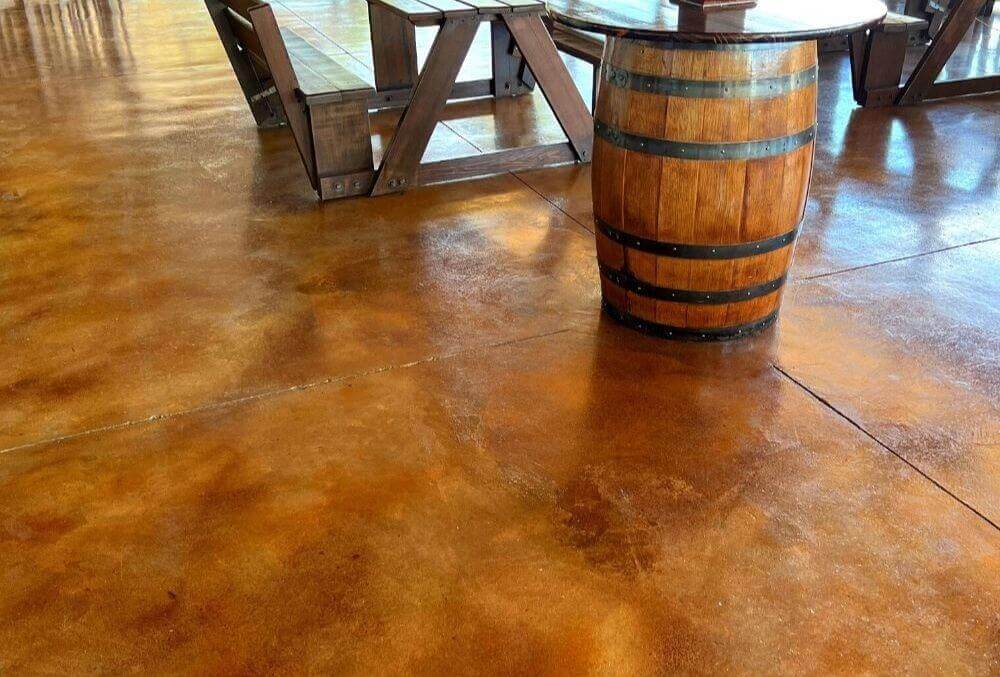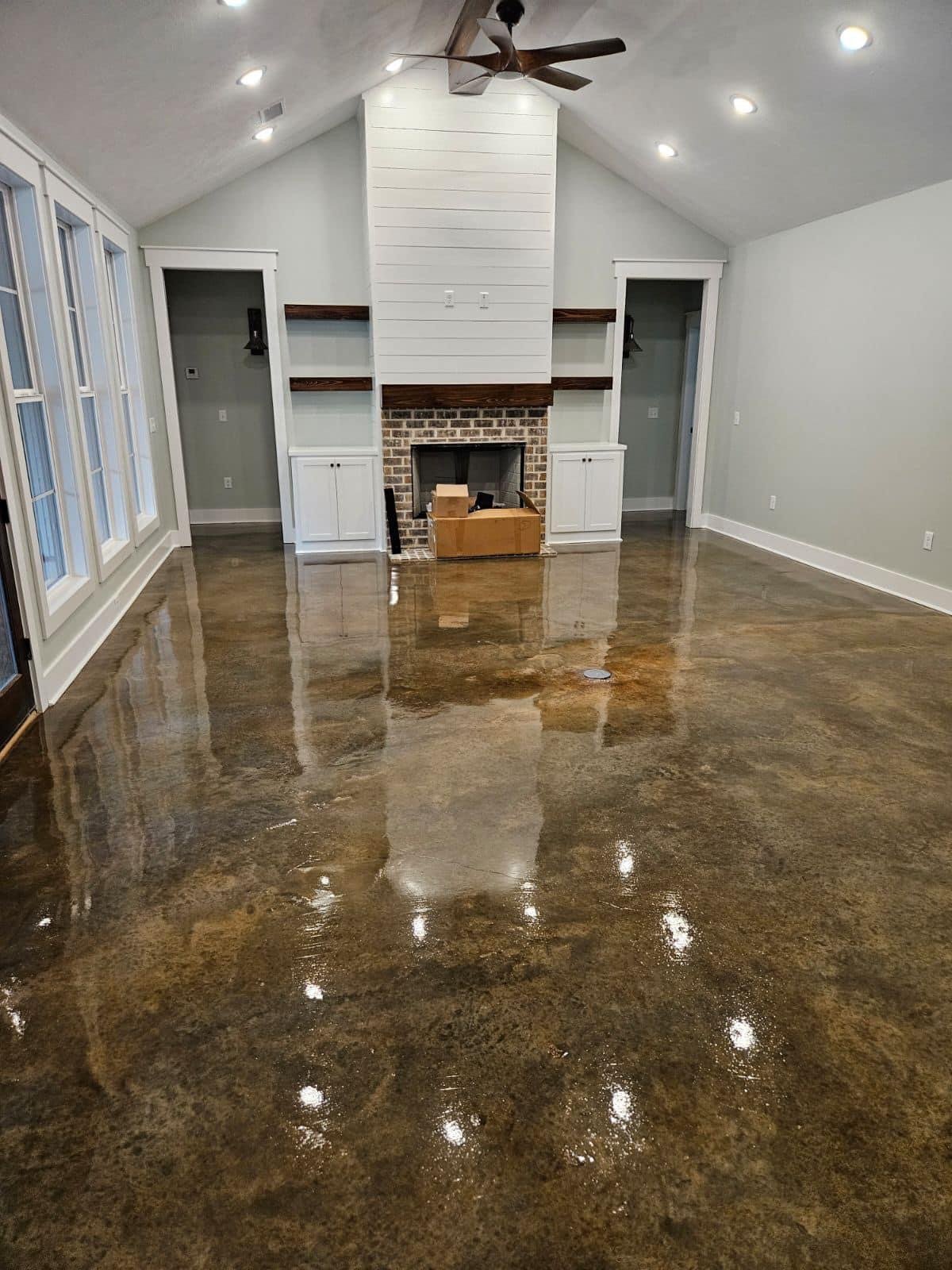Why Local Discolored Floor Covering Is the Perfect Option for Sustainable Home Improvement
In the realm of lasting home enhancement, neighborhood tarnished floor covering has actually emerged as a popular selection among ecologically mindful property owners. As an economical financial investment with reduced upkeep requirements, it raises a provocative concern: could this be the optimal option for sustainable real estate?
Comprehending the Concept of Neighborhood Tainted Flooring
While the notion might appear novel to some, neighborhood discolored floor covering is an ingenious method to home renovation that integrates appearances, resilience, and sustainability. The discoloration procedure not only improves the natural elegance of the wood grain however also adds a layer of security, raising the longevity of the flooring. Making use of regional wood varieties often supports neighborhood economic climates and advertises responsible woodland management practices.
The Aesthetics of Regional Tainted Flooring
Why is neighborhood tarnished flooring getting appeal for its looks? The answer depends on the special charm and personality it offers any room. Local tarnished floor covering offers a varied series of patterns and colors, mirroring the natural beauty and variations of the local wood species made use of. This produces an unique, tailored visual that can not be reproduced by mass-produced options. In addition, the staining procedure enhances the wood's natural grain and texture, including depth and richness to the flooring's look. This rustic sophistication effortlessly blends with different indoor design styles, from traditional to contemporary, making it a flexible selection for homeowners. Eventually, the appeal of local stained floor covering hinges on its ability to transform homes into unique, aesthetically appealing areas while advertising sustainability.
Ecological Effects of Regional Stained Floor Covering
The environmental effects of regional stained flooring encompass 2 substantial aspects: minimizing carbon footprint and waste reduction benefits. Making use of locally sourced products for discoloring not just diminishes transport discharges, but also advertises sustainable forestry methods. The waste reduction element comes right into play as these floor covering types typically have a longer life-span, decreasing the regular requirement for substitutes and the waste connected with it.
Minimizing Carbon Impact
As homeowners turn to even more lasting alternatives, local stained flooring becomes a viable remedy to lower carbon impact. This sort of floor covering largely utilizes locally sourced products, which substantially minimizes the need for transport. Subsequently, this lowers emissions connected with products transportation, adding to lower levels of greenhouse gases in the ambience. Moreover, the process of tarnishing the flooring, as opposed to utilizing synthetic coverings, involves less chemicals and less energy-intensive treatments. This leads to a decline in carbon discharges throughout the manufacturing process. Opting for local discolored floor covering shows an efficient procedure in promoting ecological sustainability, highlighting a concrete method homeowners can add to combating climate modification from the comfort of their very own homes.
Waste Reduction Benefits
Although typically ignored, waste minimization is an additional considerable advantage of local stained floor covering. Furthermore, the staining procedure utilizes fewer resources and generates less waste contrasted to producing new floor covering products. The choice of regional stained floor covering not just enhances homes yet likewise underpins a commitment to lasting living and waste decrease.
The Longevity and Maintenance of Regional Tainted Flooring

The Cost-Effectiveness of Neighborhood Tarnished Floor Covering
While neighborhood discolored flooring could originally seem much more expensive than various other options such as rug or laminate, its longevity and longevity swiftly turn it right into a cost-effective selection. The upfront cost is commonly offset by the reduction in maintenance costs with time. Unlike carpets that need regular deep cleaning or laminate that may require replacement after a couple of years, stained floors are developed to last, reducing the demand for costly repair work or substitute. Regional sourcing of materials click now decreases transportation prices, contributing to both monetary savings and a reduced carbon footprint. For home owners looking for a lasting, cost-effective service for their floor covering requires, regional stained flooring arises as a superior, long-term investment that pays off with time.

The Real World Examples of Sustainable Residences With Local Tainted Flooring
In the realm of lasting home improvement, regional discolored floor covering has become a preferred option. To additionally highlight its benefits, several genuine life instances of eco-friendly homes that have effectively included this floor covering technique will be highlighted. These study give substantial proof of the advantages and impact of using regional discolored flooring in sustainable homes.

Showcase: Eco-Friendly Floor Covering Residences
Checking the globe, one can find many homes that embody this post the principle of environment-friendly living through the usage of local discolored flooring. Across seas in copyright, a contemporary abode showcases its abundant, maple-stained flooring, a testimony to the plentiful local timber supply (Residential Stained Concrete Floors). These homes not just showcase the visual adaptability of regional tarnished flooring but likewise its payment to a much more sustainable way of life.
Regional Tainted Flooring Benefits
The indisputable appeal of regional stained floor covering expands past its aesthetic allure, as it additionally provides substantial benefits to both property owners and the environment. One more instance is a green-certified home in Austin, Texas, where in your area sourced walnut was discolored and utilized for flooring, adding to the home's LEED qualification.
Final thought
To conclude, local stained floor covering is a viable and sustainable alternative for home improvement. This option sustains local economic situations, reduces environmental influence, and enhances home looks. Its toughness ensures durability, minimizing upkeep costs in the long run. With its one-of-a-kind mix of ecological, aesthetic and cost-effective advantages, neighborhood tarnished floor covering is a clear selection for homeowners seeking a sustainable, aesthetically attractive and economical home renovation solution.
In the realm of sustainable home read this article renovation, regional tarnished flooring has arised as a popular option amongst environmentally mindful homeowners. Regional tarnished floor covering provides a varied range of colors and patterns, mirroring the natural charm and variations of the regional timber species used. The option of regional tarnished floor covering not just beautifies homes but also underpins a commitment to sustainable living and waste reduction.
For house owners looking for a lasting, cost-effective remedy for their floor covering requires, neighborhood tarnished floor covering arises as a remarkable, long-lasting financial investment that pays off over time. Stained Concrete.
With its one-of-a-kind mix of ecological, aesthetic and economical advantages, local tarnished flooring is a clear choice for home owners seeking a lasting, visually attractive and cost-effective home renovation service.